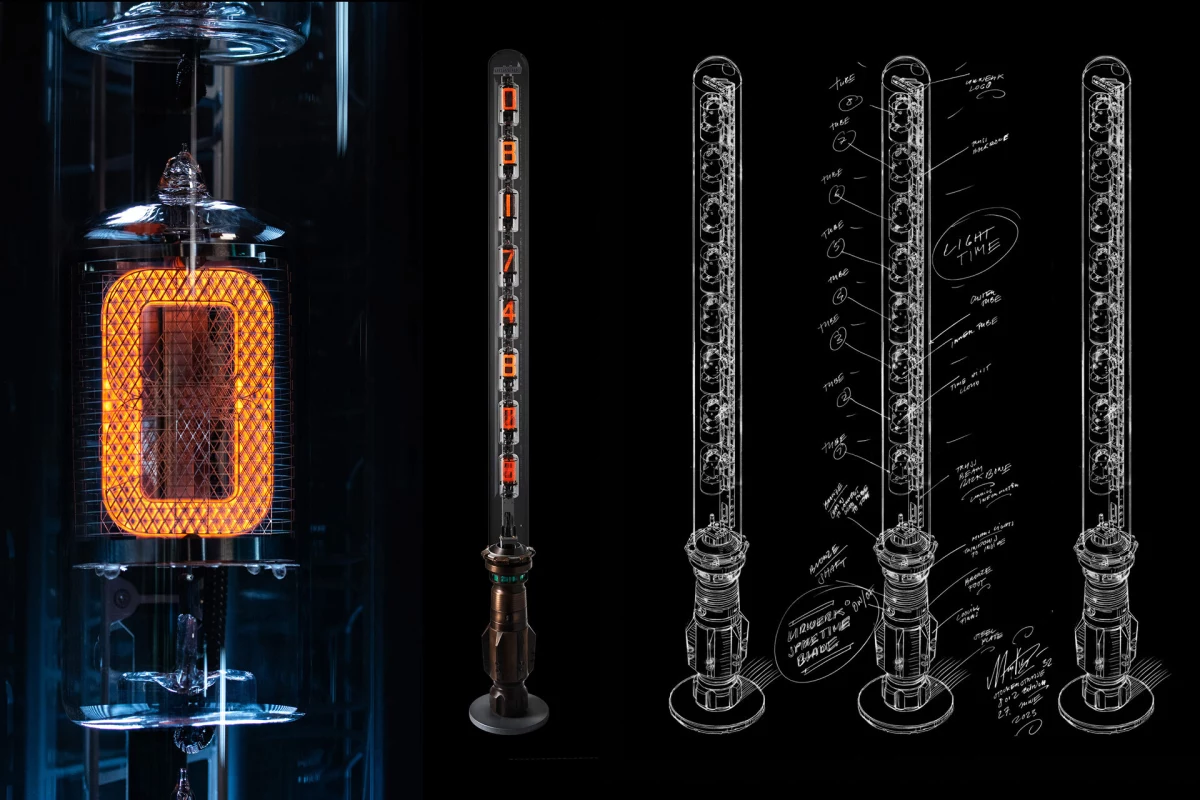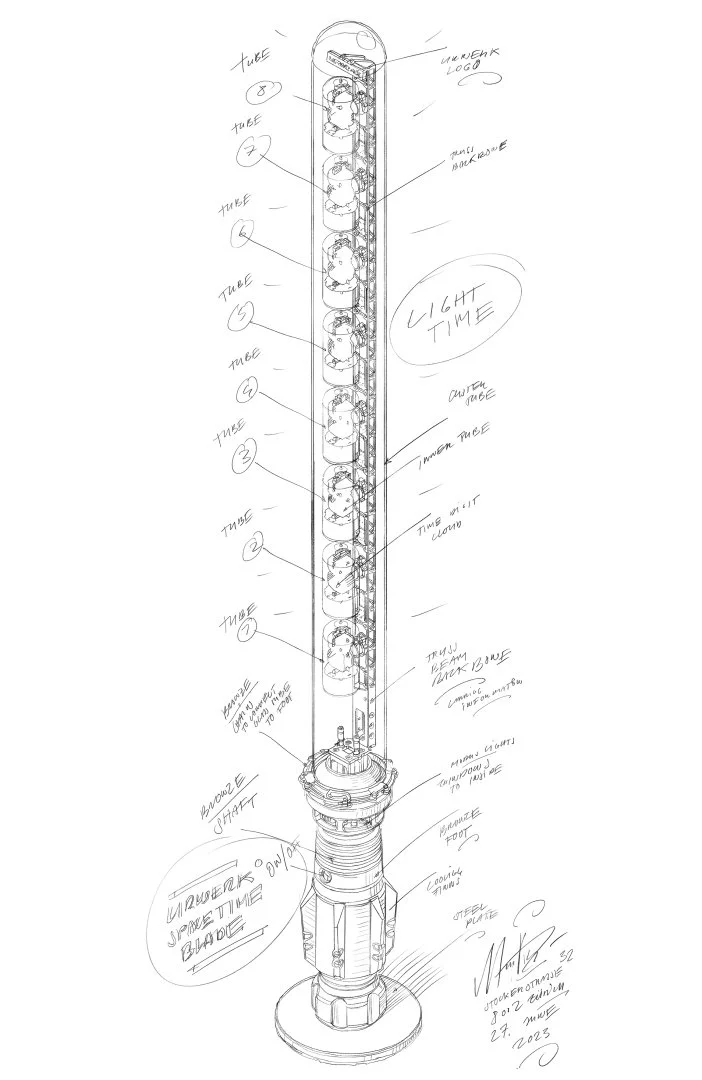If you wished your lightsaber could tell the time, Urwerk has got your back. It's released its limited edition SpaceTime Blade clock that uses good old Nixie tubes to display a quirky collection of time and astronomical measurements.
Urwerk is known mainly for its collection of outré wristwatches with all sorts of bonkers complications and exotic case materials that are designed to catch the eye and start conversations. Now the company is taking a break with the SpaceTime Blade that is 1.7 m (67 in), weighs 20 kg (44 lb) and consists mostly of a great big glass tube, so it's well out of the wrist category.
According to Urwerk, the purpose of the timepiece is to call back to early clocks of the Middle Ages, which surprisingly complicated affairs intended to replicate all sorts of celestial movements. In the case of the SpaceTime Blade, it not only tells the time and date, but also the distance the Earth moves in the course of a day and the year.

The base of the SpaceTime Blade is crafted in the shape of a watch crown out of bronze using a method called lost wax casting that dates back to ancient Greece. In this, the item in question is first carved out of wax, which can support very fine details. This wax original is then sealed in plaster or some other molding medium. Through a series of small holes, molten bronze is poured in to melt and replace the wax as it drains away. Once cooled, the mold is split open and the bronze piece is buffed and polished, and a patina is applied.
But what really sticks out (pardon the pun) is the handcrafted domed glass tube containing eight Nixie tubes for the display. For those of you who aren't of a certain age or into vintage tech, Nixie tubes were a popular way of producing digital displays from the 1950s until the development of LCDs and LEDs in the 1970s.
In the SpaceTime Blade Nixie tubes, each unit has a sandwich of 10 0.1 mm-thick steel cathodes shaped into numerals held in a metallic anode cage and sealed in a low-pressure glass bulb with a mixture of neon and argon. When a current is passed through one of the metal numerals it glows reddish orange. It looks a bit old fashioned, but the company claims that the display can change as fast as 500 times per second.

It works, but each Nixie bulb requires 88 hand-assembled parts. In all the SpaceTime Blade contains 1,446 components. With the included remote control, the SpaceTime Blade can be made to display hours, minutes, and seconds; and hours, minutes, and seconds down to 1/100th of a second; day, month, and year.
However, the party piece is that the clock can show how many kilometers the Earth has rotated that day at the equator, or how far in kilometers the Earth has revolved around the Sun that day or that year to date.
"We continue to explore the relationship between time and space," said Urwerk co-founder Felix Baumgartner. "As far back as the 1800s, Gustave Sandoz made this relationship visible by creating a clock that, instead of displaying the hours, showed a countdown in kilometers. This totally original instrument reminded us of our condition as mere passengers on the space vessel Earth, hurtling through the galaxy at phenomenal speed. It's this concept that we picked up in our 100 collection and that we're now interpreting through our SpaceTime Blade. It’s about making our journey visible; translating the 940 million kilometers we travel around the Sun each year into hours, minutes and seconds."
If you want one, the SpaceTime Blade is available in a limited run of 33 units at a cost of CHF 55,000.00 (US$61,000) each.
Source: URWERK









